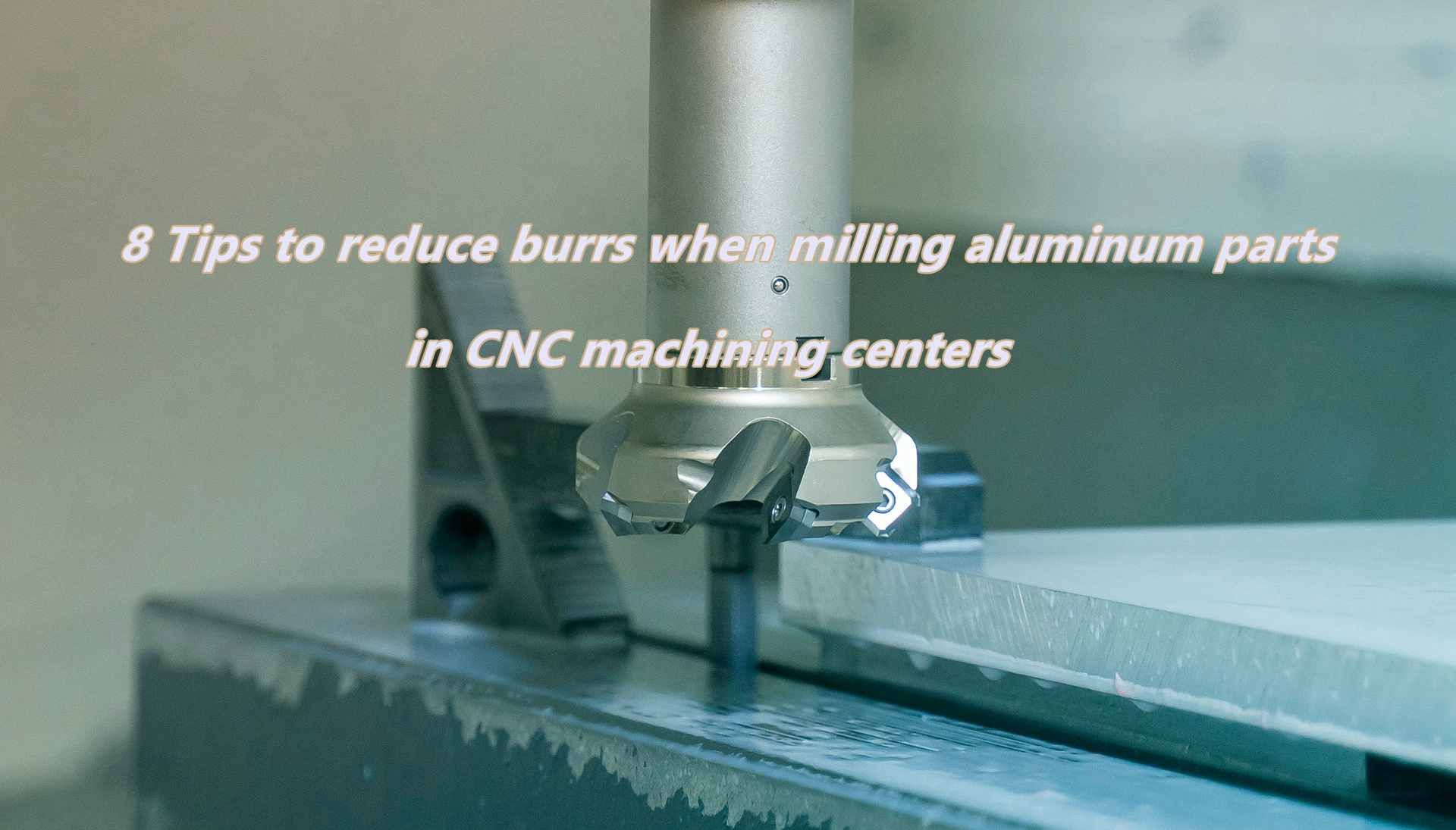Our Location
304 North Cardinal St.
Dorchester Center, MA 02124

Burr formation is a common issue when milling aluminum parts using CNC machining centers. Burrs are undesirable projections leftover from the cutting process that must be removed through deburring operations. Minimizing burr formation when initially machining aluminum parts is beneficial for improving quality and reducing secondary processing.
Burrs will not only reduce the machining accuracy of the workpiece, thereby affecting the performance of the workpiece, but also increase the processing cost. Therefore, deburring is usually required, which is not only troublesome, but may also damage the workpiece. Therefore, it is better to control the burrs as much as possible during processing.
The shape and size of the burr is influenced by several factors such as workpiece material and its end support stiffness, tool geometry, tool cutting trajectory, tool wear, cutting parameters and coolant usage.
1. Burrs will reduce the accuracy of processing, measurement and installation, and affect the dimensional accuracy, shape and position accuracy of the workpiece.
2. The hardening and shedding of burrs cause cracks and shorten the service life of the workpiece.
3. Risk of injury to producers and machine users.
4. The presence or absence of a glitch can cause an electrical short. If positioned on a sliding segment, it will experience augmented deterioration kinetics and engender a mishap.
Here are some tips for reducing burrs in CNC milling of aluminum:
Metal processing is achieved by extruding the tool from elastic deformation-plastic deformation to cut the machined part of the workpiece. As the aluminum alloy material itself possesses favorable tenacity and ductility, the chips are not prone to fracturing, therefore sharpening the cutting edge of the tool is imperative. Utilize acute cutting implements and replace deteriorated tools expeditiously to engender pristine, burr-absent cuts. Sharp high-helix end mills and ball end mills perform well.
When engineering the process, attempt to opt for a processing technique that generates lesser burrs or assists with burr removal.
For example, during cutting, it is necessary to place the cutting edge at a position where the part’s cutting edge angle θ (intersection angle between two adjacent processing surfaces) is large and the end support rigidity is high, so that the burrs can be effectively reduced or completely eliminated.
On the milling machine, down milling cuts into thick layers, cuts out thin layers, cuts stably, produces small burrs, and cuts into thin layers. Moreover, superior and inferior milling apparatus possess thicker cut strata and generate larger burrs, thus down-milling ought be utilized to the maximal extent feasible to mitigate milling burrs.
When milling a plane, using an end mill to process the plane of the part will increase the cutting force generated when cutting perpendicular to the machined surface, resulting in larger burrs. Ascending milling utilizing a cylindrical milling mechanism can effectively diminish the genesis of burrs.
Additionally, even if complete suppression of burrs is infeasible during machining, optimal placement of the cutting edge should facilitate deburring to minimize the expenditure of the deburring process.
Optimize feed rates, cutting speeds, and depth of cut. Higher feeds and speeds within the tool’s capabilities help fracture chips for a cleaner cut.
For instance: expand the rake angle of the implement, decrease the cutting width, and calibrate the cutting velocity. These can be adjusted according to the actual situation.
When organizing the processing sequence, it is necessary to place the process that produces burrs first, and then the process that does not produce burrs (few burrs, small number). Or rationally use several subsequent processes to eliminate the glitches of the previous processes. For instance, when fabricating a stepped channel, firstly process the deep furrow, followed by machining the shallow furrow, which can eliminate the groove edge burrs produced during deep furrow cutting and enhance the machining quality.
Tool retraction constitutes the predominant contributor to burr formation along the cutting trajectory. In general, the burrs generated when the milling cutter is unscrewed from the workpiece are relatively large, while the burrs generated when the milling cutter is screwed into the workpiece are relatively small.
Employ cutting fluids possessing superlative anti-adhesion attributes to diminish tool deterioration, augment longevity, lubricate the milling procedure, and mitigate burr dimensions.
Keep the edge of one part close to the edge of another part. This can curtail the cutting stroke, enhance production efficiency, augment component rigidity during machining, mitigate cutting deformation, and effectively preclude and diminish the incidence of burrs.
Various accessories are used for auxiliary support and filling at the edge of part processing. For example, when machining a small hole in a thin-walled pipe, the mandrel is inserted into the part, drilled and removed. This will prevent deformation of the part and prevent burrs from forming in the hole.
Avoid rigidity issues that can cause chatter, vibrations, and poor finishes. Ensure vices, fixtures, and part hold-downs are rigid and eliminate other sources of vibration.
Apply special surface treatments to aluminum parts like hard anodizing. The additional hardness helps prevent burr formation during milling.
Following these tips will help reduce undesirable burrs. This saves time and cost while improving aluminum part quality coming off CNC machining centers.
At Componing Co., Ltd, our experienced staff can help you find the right way to reduce undesirable burrs for your contract manufacturing project. Send us your project today.